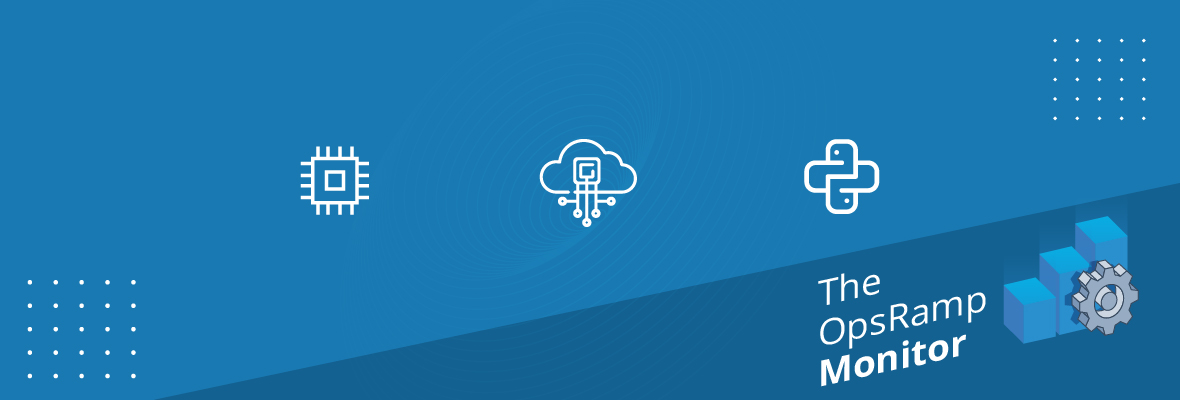Top Weekly Reads in IT I&O
The OpsRamp Monitor: OpsRamp’s top weekly review of interesting developments and emerging trends in IT operations. Subscribe to our blog for the latest and greatest in monitoring, DevOps, AIOps and cloud computing and stay on top of everything Ops.
In this issue:
- Damn Yankees and their AI companies make EU leaders nervous.
- Defining data-centricity in AI projects.
- The value of second-tier cloud providers.
- Why Python is a great language for beginners.
Make way for regulation. Lately, the higher-ups in the EU are pushing back on the excessive influence of Silicon Valley-based innovation. On Wednesday, the EU’s executive branch, the European Commission, initiated talks to determine how and if to enforce controls over AI. As CNBC reports: “One area that the Commission is particularly concerned about is facial recognition. At the moment, the processing of biometric data in order to identify people is illegal in most cases, under data privacy laws.” On Sunday, The New York Times reported that the Commission’s Executive VP Margrethe Vestager said she was most worried about algorithms that determined who gets a loan or what diseases are diagnosed.
The Times also reported this week on more general concerns that the Commission has about foreign tech influence: “Companies that have become “gatekeepers” between businesses and customers — like Amazon for shopping, Apple’s App Store, Facebook’s social network and Google’s search engine — will face more scrutiny. A particular focus, officials said, will be on the data they hold that could give them an unfair advantage over rivals.”
So what does the potential for new EU regs mean for people working in IT? Keep innovating and experimenting but keep a closer eye on data privacy. Drilling down to AI products used in IT operations, vendors and practitioners alike should evaluate the risks of AI tools mining deeper into apps and devices at the user level. What personal data, if any, is being collected in the efforts to keep systems running well?
Getting practical about AI. Despite the uncertainty, CXOs are keenly interested in enterprise AI, along with data & analytics and cloud, according to a survey by Sierra Ventures. When asked about the biggest challenges they face with AI, the executives cited: “finding and cleansing the right data” and “triaging the right AI use cases for the organization.”
A practical, data-centric approach to AI was also the premise of this article in TechWire Asia. Here’s the advice:
- Use data-centric tools and methodologies like Cross Industry Standard Process for Data Mining (CRISP-DM);
- Find data-centric talent that’s “a good mix of data scientists, engineers, and specialists that possess the skills to put models into operation”;
- Keep investing: “If the technologies used are no longer relevant, they should be replaced. AI projects will not work if employees lack the skills and tools needed to deploy them.”
Oh, and check out our blog post on a sensible adoption path for AI in IT operations.
The ugly stepchildren in cloud. Ok, they aren’t ugly but all the companies that compete with the big 4 cloud providers (including Alibaba) each have teensy market share. IBM, the company following Google in this Gartner chart printed in CIO Dive, owns less than 2% of the market. CIO Dive insists there is still a role for the smaller players: “Any company compared against Amazon, Microsoft and Google — each of which has held a $1 trillion market capitalization — looks small, almost insignificant. But alternative companies measure success in millions, not billions. They may not win the market, but they will continue to excel.”
Melanie Posey, a 451 Research VP quoted in the article, elaborates on how a second-tier cloud provider brings value: “If a company doesn't need the ‘associated bells and whistles’ of a hyperscaler, they might choose DigitalOcean or French cloud computing provider OVH, said Posey. Or they're an existing customer of IBM or CenturyLink and choose to remain with their primary technology provider.” Read on for lots of interesting examples of how relatively unknown cloud companies are thriving in distinct use cases. Long live capitalism!
Why learn Python? All ye testers, network administrators, analysts and scores of other business and IT folks who don’t know how to code but think maybe you should learn...try Python, according to TechRepublic. The tech site’s article includes tips on where and how to learn it. “Python consistently receives top billing in rankings mainly because it is one of the easiest programming languages to learn because it reads like English, industry observers said. This makes Python a good choice if you're thinking about learning a coding language.” Of course, not everyone agrees that it's easy, though still useful, as this programmer notes on Hackernoon. Here’s one more vote of confidence on Python with some cautions, from Meenakshi Agarwal on Medium: “Python is a very simple, elegant, and type free programming language. So, it’s relatively easy to learn.”
Next Steps:
- Read why HPE invested in OpsRamp.
- Learn about the OpsRamp Platform.
- Subscribe to the OpsRamp Blog!






